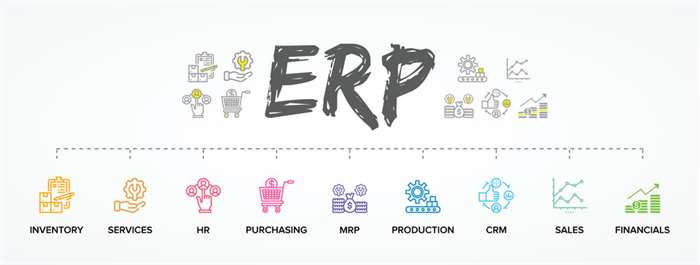It specifies how your cloud infrastructure will look, what you can change, and whether you will be given services or will have to create everything yourself. Relationships between the infrastructure and your users are also defined by cloud deployment types. Different types of cloud computing deployment models are described below. This is a cloud computing deployment model in which a combination of on-premises, private cloud, and public cloud services are consumed. This model is extremely common, especially with larger organizations, as a single cloud deployment model may not be optimal for all workloads.

Often businesses require a private cloud to tightly control, secure and run their resources and infrastructure. On the other hand, the private cloud is where businesses operate their own infrastructure for cloud computing. People usually access these computing resources on demand over a private network connection set up by their company.
Our Services
Unlike a private cloud, a public cloud serves more than just one single entity. Anyone can access services and use resources from a public cloud, whether you’re an individual or an organization. Cloud deployment models refer to the way resources are provided in the cloud. On the other hand, cloud service models satisfy the requirements of various businesses or organizations as Public, Private, Hybrid, and Community Cloud. As the name suggests, Private Cloud lets you use the infrastructure and resources for a single organization.
By combining different deployment models, you can pick and choose the perfect balance between legal compliance, security, and scalability. A private cloud is just a public cloud that isn‘t open to the public. That means that it‘s ideal for a company that wants cloud benefits but needs to avoid sharing computing resources with anyone. The cloud business solutions prohibitive costs required for a private cloud mean that it‘s only really suitable for big companies with big IT budgets. The RightScale State of the Cloud Survey found that the public cloud is growing in popularity this year. This is because public cloud providers are gaining more trust from big companies with their sensitive IT assets.
Cloud Computing Deployment Models – Public, Private & Hybrid
It's often impractical to have a server in-house, so an enterprise may prefer a vendor or third party to run the software off their servers, usually hosted in secure remote data centers. The enterprise owns the software but then pays a monthly or annual fee to access the server, which also covers the cost of deployment, security, backups and server maintenance. You may want to leverage each provider's best services for your product. A multi-cloud approach allows you to get the best from all providers. Cloud providers like Vmware offer multi-cloud services to organizations at a fee.
- Understanding pricing models for managed private cloud deployments can get complicated.
- It works as your virtual computing environment with a choice of deployment model depending on how much data you want to store and who has access to the Infrastructure.
- You may not want to share your data with a public provider for fear of security breaches.
- And, because setup and running costs are shared between multiple organizations, the economy of scale savings come back.
- Private clouds are more secure than public clouds since they are not accessible to anyone outside the organization.
- Vendor lock-in is also a concern that users always have, but in practice, they live with it.
Although there are concerns about the security of data on public clouds, CSPs like AWS have enhanced their security measures, helping customers secure their systems. Would have also been interesting to learn more about severless computing. It’s less common but a lot of organizations are turning to a serverless model . The hybrid cloud section could have gone a little more in-depth. “Enhanced flexibility” is one of the biggest benefits of a hybrid deployment. Being able to rapidly change cloud environments and ecosystems is huge.
Part 3 | Your Forte Cloud Journey: Developing Your Cloud Strategy
It also improves the efficiency and smooth workflow of these participating companies in case of joint projects. With the help of centralized cloud, project development, maintenance and deployment can be managed well, and cost will be divided amongst the companies. Unlike the public cloud, it’s not shared with other organizations .

Traditionally, if your website suddenly had a 20x spike in traffic, your servers would be overloaded and it would crash. Allows stakeholders to select the best vendor based on payment flexibility, contracts, customizable capacity. This is particularly important as needs change, allowing companies to be nimble and allocate resources accordingly. Companies have increased control over their data, allowing stakeholders to choose from environments that best suit each individual use case. Well, it means that cloud computing is a necessity for any business looking to stand out among the competition.
Is Hybrid the Right for Me?
In an on-premises, or private cloud computing deployment model an enterprise deploys their own infrastructure and applications into their own data center. Though an on-premises deployment is very much the “legacy IT” setup, it can have many of the characteristics of cloud computing if the stack is designed properly – hence turning it into a “private cloud”. Consequently, organizations that implement a private cloud face all of the ownership and management https://www.globalcloudteam.com/ burdens present in a traditional data center, such as power, cooling and hardware costs. Private clouds also face practical limitations in scalability and services because a single business might not have the finances or technical expertise to implement a full-featured cloud for private use. They can quickly adjust how much they need and pay as they go only for what they use. Hybrid clouds can also partition different services onto different cloud models.

With public clouds, the cost is typically low for the end user and there is no capital expenditure involved. Private clouds also offer more security and compliance support than public clouds. A hybrid cloud deployment model combines public and private clouds. Creating a hybrid cloud computing model means that a company uses the public cloud but owns on-premises systems and provides a connection between the two. They work as one system, which is a beneficial model for a smooth transition into the public cloud over an extended period.
What is the benefit of cloud computing?
Software as a Service is provided over the internet and requires no prior installation. The services can be availed from any part of the world at a minimal per-month fee. Shared Resources - Due to restricted bandwidth and storage capacity, community resources often pose challenges.

In summary, when running a private cloud on-premises, companies have more visibility and control over the physical security controls and data storage. However, these come at the expense of substantial upfront capital expenditure and operating costs. With a better understanding of what public cloud is and the cloud service models that providers offer, let’s look at the advantages and disadvantages. A common/core platform that is hosted and maintained by the cloud provider. “PaaS” allows users to develop software without needing to maintain the underlying infrastructure. It often includes version control and compile services as well as computing and storage resources.
Public cloud disadvantages
For example, an application may require higher resources if it runs on-premise than in a public cloud instance with lower resource requirements. Hybrid clouds can also be used to create multi-cloud environments, which gives companies more flexibility when choosing where they want their data stored and how they want it accessed. Multi-cloud environments allow companies to choose from multiple providers to get the best price and performance for their needs.
